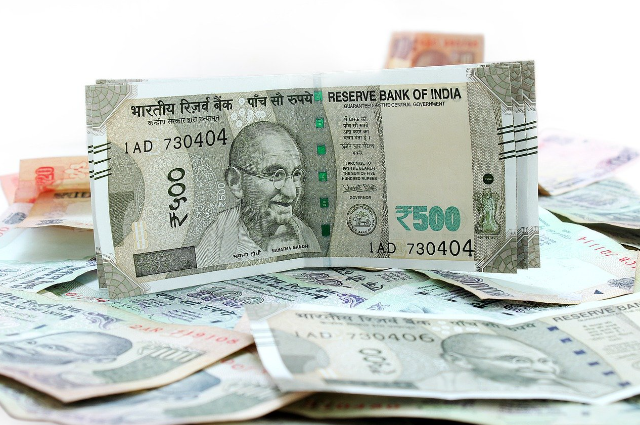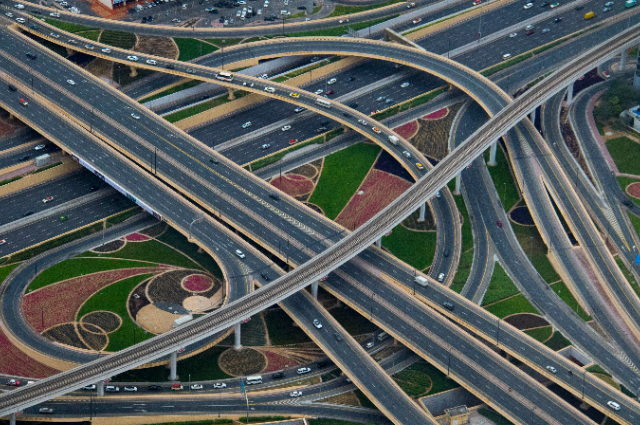
Image by Jatinder Jeetu from Pixabay
Technology is the most important tool for economic progress. Those who master it will shape the future, while those who ignore it risk falling behind. India's future lies in its ability to embrace innovation and invest in talent." – Satya Nadella, CEO of Microsoft.
CURRENT INDIAN ECONOMY: CHALLENGES & OPPORTUNITIES
India’s current economic scenario is a complex blend of progress and persistent challenges, reflecting both resilience and areas of concern in a rapidly changing global environment. Key economic indicators present a varied picture, where optimism is tempered by pressing structural issues.
- GDP Growth: India's GDP growth has experienced notable shifts in recent years. The nation, once known for its consistently high growth rates, now faces a more tempered economic expansion. While the economy has shown resilience, especially in recovering from global disruptions, the fluctuations in growth demand a deeper examination of internal and external factors affecting this deceleration.
- Inflation: Rising inflation remains a significant challenge for the Indian economy, straining household budgets and impacting consumer sentiment. Although the Reserve Bank of India (RBI) has taken measures to control inflation, supply chain disruptions and global price volatility have kept inflationary pressures alive. The challenge now is to maintain an equilibrium where economic growth can coexist with price stability.
- Unemployment: Despite the expansion of various industries, unemployment continues to be a pressing socio-economic issue. The gap between the skills demanded by the market and the available workforce has contributed to persistent joblessness, particularly among the youth. Creating a robust employment ecosystem that aligns educational outputs with industrial needs is critical to fully harness India’s demographic advantage.
- Fiscal Deficit: India’s fiscal deficit remains a topic of concern. The balancing act between fueling growth through government spending and maintaining fiscal discipline has become increasingly difficult. Rising public expenditure and a slower-than-expected revenue recovery have widened the deficit. Effective fiscal management will require strategic decisions, such as reducing inefficient expenditures and improving tax collections.
- Global and Domestic Pressures: India's economic outlook is shaped by global factors such as geopolitical tensions, fluctuating commodity prices, and changing trade dynamics. Domestically, policy reform and infrastructure development are vital to boosting investor confidence and ensuring sustainable growth.
KEY CHALLENGES HINDERING ECONOMIC GROWTH
India, a nation of immense potential and a burgeoning workforce, finds itself at a pivotal moment in its economic journey. While the country has made significant strides in various sectors, several deep-rooted challenges continue to obstruct its path to sustained prosperity. Understanding and addressing these obstacles are crucial to unlocking the nation’s full potential in the global economy.

Photo by Nick Fewings on Unsplash
1. Infrastructure Deficit:
One of the most pressing issues facing India is its underdeveloped infrastructure. Although the country has made advancements in certain areas, the overall state of roads, railways, ports, and energy supply is inadequate to support the demands of a growing economy.
The lack of reliable infrastructure not only slows down the movement of goods and services but also discourages foreign investment and limits the competitiveness of domestic industries.
Large-scale investments in infrastructure development, with a focus on modernization and sustainability, are essential for enhancing India’s global economic position.
2. Bureaucratic Hurdles and Inefficiency:
India’s bureaucratic system remains notoriously inefficient, characterized by complicated processes and excessive administrative hurdles.
This “red tape” delays decision-making and frustrates both domestic and international businesses seeking to expand their operations. While there have been efforts to improve governance through digital initiatives and policy reforms, a more fundamental overhaul is necessary.
Streamlining administrative processes, reducing paperwork, and empowering decentralized decision-making will create a more business-friendly environment, fostering innovation and entrepreneurship.
3. Corruption and Governance Challenges:
Corruption continues to be a significant barrier to India’s economic development. Despite various anti-corruption measures, unethical practices persist in both public and private sectors, distorting market dynamics and eroding public trust in institutions.
Effective governance reforms, along with stricter enforcement of anti-corruption laws, are essential to improve transparency and accountability. A shift towards ethical governance will restore confidence among investors and citizens alike, promoting fair competition and efficient resource allocation.
4. Complex Regulatory Landscape:
India's regulatory environment is another area that requires urgent attention. The country’s legal framework is often criticized for being overly complex, with overlapping regulations and frequent policy changes that create uncertainty for businesses.
This unpredictability deters both foreign and domestic investors, slowing down economic growth. A comprehensive overhaul of the regulatory framework is needed to simplify laws, ensure consistency in policy-making, and foster a more predictable business environment.
By reducing bureaucratic bottlenecks and regulatory ambiguities, India can attract greater investment and spur industrial growth.
5. Social and Economic Disparities:
- Income Inequality:
India’s economic growth has not been evenly distributed across its population, leading to significant income inequality. A small percentage of the population enjoys substantial wealth, while millions remain in poverty, unable to benefit from the country’s economic progress.
This inequality stifles consumption and investment from lower-income groups, further limiting the potential for growth. Addressing income inequality through redistributive policies, social safety nets, and inclusive economic strategies is crucial to ensuring that the benefits of growth reach all sections of society.
- Education and Healthcare Access:
India’s economic future depends on the development of its human capital, yet access to quality education and healthcare remains a challenge for large portions of the population. A lack of education opportunities and inadequate healthcare infrastructure prevent millions from contributing fully to the country’s workforce. To harness the potential of its demographic dividend, India must invest heavily in education reform, vocational training, and healthcare accessibility. A skilled and healthy workforce is vital for driving long-term economic development and innovation.
6. Environmental Degradation:
Environmental sustainability is a growing concern for India, where pollution, deforestation, and climate change are becoming more pressing each year. The economic cost of environmental degradation—whether in the form of health crises or diminishing natural resources—poses a serious threat to long-term prosperity.
As India seeks to grow its economy, it must adopt environmentally conscious practices, such as investing in renewable energy, implementing stringent pollution controls, and embracing sustainable development models.
By addressing environmental challenges, India can ensure that economic growth does not come at the cost of ecological destruction.
How can policymakers and stakeholders work together to overcome these obstacles and unleash India's full economic potential?
POLICY CHALLENGES IN INDIA: A CRITICAL EVALUATION
In recent years, India has pursued an array of governmental policies and reforms aimed at driving economic growth and enhancing overall development.
These initiatives encompass significant frameworks such as the Goods and Services Tax (GST), the Make in India program, and extensive infrastructure projects.
Despite their ambitious goals, the efficacy of these policies in fulfilling their intended purposes continues to invite debate and critical examination.

Photo by Kelly Sikkema on Unsplash
Goods and Services Tax (GST)
Introduced in July 2017, the GST was designed to overhaul India's fragmented indirect tax system, aspiring to create a seamless national market. While it has achieved certain successes, such as simplifying tax administration and minimizing tax cascading, it has not been without its criticisms.
The GST's intricate structure has led to compliance challenges and has initially disrupted various business operations. A comprehensive evaluation of its impact on economic growth necessitates a detailed analysis of its advantages and disadvantages, particularly concerning business competitiveness, consumer welfare, and the government's revenue generation capabilities.
Make in India Initiative
Launched in 2014, the Make in India initiative seeks to position India as a global manufacturing leader by promoting domestic production, attracting foreign investments, and fostering innovation. Although it has captured the attention of investors and has led to some improvements in the ease of doing business, its effectiveness in rejuvenating India's manufacturing sector and creating sustainable employment opportunities remains in question.
Assessing the initiative's success involves examining its outcomes regarding industrial productivity, export competitiveness, and job creation across various sectors and geographical regions.
Infrastructure Development
Infrastructure is foundational for stimulating economic growth and improving living standards across the nation. The government has initiated a multitude of projects aimed at enhancing transportation networks, including roads, railways, ports, and urban facilities. However, numerous challenges persist, including delays in project execution, funding shortages, land acquisition hurdles, and regulatory complexities.
These obstacles raise important questions regarding the effectiveness of infrastructure investments in fostering economic activity and enhancing productivity growth.
Monetary and Fiscal Policy
Monetary and fiscal policies are pivotal in shaping macroeconomic conditions and promoting sustainable growth. The Reserve Bank of India (RBI) is responsible for crafting monetary policy aimed at achieving price stability, supporting economic expansion, and ensuring financial system integrity.
Conversely, fiscal policy, directed by the central government, entails strategic decisions regarding taxation, public expenditure, and borrowing practices to regulate aggregate demand and fiscal deficits.
Evaluating the success of these policies involves a thorough examination of their influence on critical macroeconomic indicators such as inflation, unemployment rates, interest levels, and government debt trajectories.
As India continues to implement and refine its policies, a nuanced and comprehensive approach to evaluation is essential. Only through careful analysis and a willingness to adapt can these initiatives truly fulfill their potential and foster a robust economic environment conducive to growth and development.
GLOBAL TRADE DYNAMICS
India's journey towards global economic integration has been marked by significant transformations that have reshaped its trade landscape.
With a focus on expanding trade relationships, attracting foreign direct investment (FDI), and engaging with international regulatory frameworks, India is navigating the complexities of a globalized economy.

Expanding Trade Networks
Central to India’s globalization strategy is the diversification of its trade partnerships. Over recent years, India has strategically expanded its trade networks to include both established allies and burgeoning economies. Through a combination of bilateral and multilateral trade agreements, India aims to enhance its export potential and global competitiveness. Notably, recent initiatives such as the Regional Comprehensive Economic Partnership (RCEP) reflect India’s ambition to strengthen economic ties within the Asia-Pacific region and beyond.
Attracting Foreign Direct Investment
India has successfully positioned itself as a prime destination for foreign investment, drawing substantial FDI across various sectors, including technology, manufacturing, and services. The country’s liberalized investment policies and regulatory reforms have created a more conducive environment for foreign investors. This influx of FDI not only brings capital but also facilitates the transfer of technology, promotes skill enhancement, and generates employment opportunities. These factors collectively contribute to India’s broader socio-economic development agenda.
Active Participation in International Organizations
India’s commitment to a rules-based multilateral trading system is exemplified by its active participation in organizations such as the World Trade Organization (WTO). As a founding member, India plays a crucial role in advocating for the interests of developing nations while engaging in global trade negotiations and dispute resolution processes. By leveraging its position within these international forums, India seeks to ensure its trade interests are safeguarded and promote inclusive, sustainable economic growth.
Navigating Global Economic Trends
Despite its proactive approach to globalization, India’s integration into the global economy is susceptible to various external influences. Fluctuations in global commodity prices, evolving demand dynamics, and trade tensions among major economies can substantially affect India’s export performance and overall trade balance. Furthermore, geopolitical developments—ranging from trade disputes to regional conflicts—can introduce uncertainties that undermine investor confidence and disrupt established supply chains.
How can India leverage its trade relationships and FDI inflows to drive inclusive and sustainable growth?
How does India balance its national interests with its commitments to the global community?
PROSPECTS FOR NATIONAL ADVANCEMENT

Leveraging Youthful Energy
India's demographic landscape offers a remarkable opportunity for national progress, characterized by a predominantly youthful population. With a median age of approximately 28 years, the nation possesses a dynamic workforce that is essential for driving economic advancement.
To fully capitalize on this demographic advantage, India must invest strategically in comprehensive education and skill-building initiatives, coupled with robust job creation efforts. This focus will ensure that the youth are equipped with the necessary tools to actively contribute to and engage in the economy.
Rise of the Emerging Middle Class
The growth of India's middle class is another critical factor that enhances the country's developmental trajectory. As household incomes increase and consumer behaviors shift, this demographic segment plays a pivotal role in stimulating demand across various industries, subsequently propelling economic growth and fostering innovation.
However, to harness the potential of this burgeoning middle class, it is crucial to address prevailing income disparities and promote social mobility. Ensuring equitable access to opportunities is vital for sustaining inclusive development and maximizing the middle class's role as a driver of progress.
Innovation as a Growth Engine
India's capabilities in technology and innovation present substantial prospects for shaping its future. The rise of startups and advancements in sectors such as information technology and biotechnology indicate a growing enthusiasm for innovation-driven growth.
To fully leverage this potential, the country must cultivate an ecosystem that supports research, development, and entrepreneurship. Additionally, addressing the digital divide is essential to ensure that technological advancements benefit all segments of society.
Navigating Opportunities and Challenges
India's economic evolution unfolds amidst a landscape filled with both opportunities and challenges. Ongoing reforms aimed at liberalization, including initiatives to simplify business operations and tax structures, have created a favorable environment for investment and trade. These changes are crucial for facilitating business expansion and integrating into the global economy.
However, persistent structural challenges, such as inadequate infrastructure, complex regulatory frameworks, and bureaucratic inefficiencies, remain significant hurdles to achieving sustainable growth. Moreover, the imperative of environmental sustainability cannot be overlooked; striking a balance between economic development and ecological health is crucial. Embracing climate change mitigation strategies and green technologies can pave the way for a more sustainable future.
Global Economic Implications
India's pursuit of development resonates beyond its borders, impacting global economic dynamics. As the world's largest democracy and a rapidly expanding market, India's economic resurgence enhances its status as a vital player in the international arena.
Collaborative partnerships, multilateral engagements, and technological exchanges with global stakeholders are essential for fostering mutually advantageous outcomes. These efforts not only contribute to India's growth but also bolster global economic resilience in an interconnected world.
CONCLUSION
India's economic landscape is a complex interplay of challenges and opportunities, underscoring the importance of strategic investments in infrastructure, talent development, and regulatory reform. As the country strives to harness its demographic dividend and foster inclusive growth, addressing persistent issues like unemployment, corruption, and environmental degradation is crucial. By fostering an environment conducive to innovation and leveraging its youthful population, India can position itself for sustained economic advancement. How can policymakers effectively collaborate to navigate these challenges and seize the opportunities for a prosperous future?

. . .
Reference:
- https://m.economictimes.com/news/economy/policy
- https://www.business-standard.com/industry/news
- https://www.crn.in/columns/empowering-indias-urban
- https://www.thehindu.com/elections/lok-sabha
- https://www.orfonline.org/research
- https://timesofindia.indiatimes.com/india
